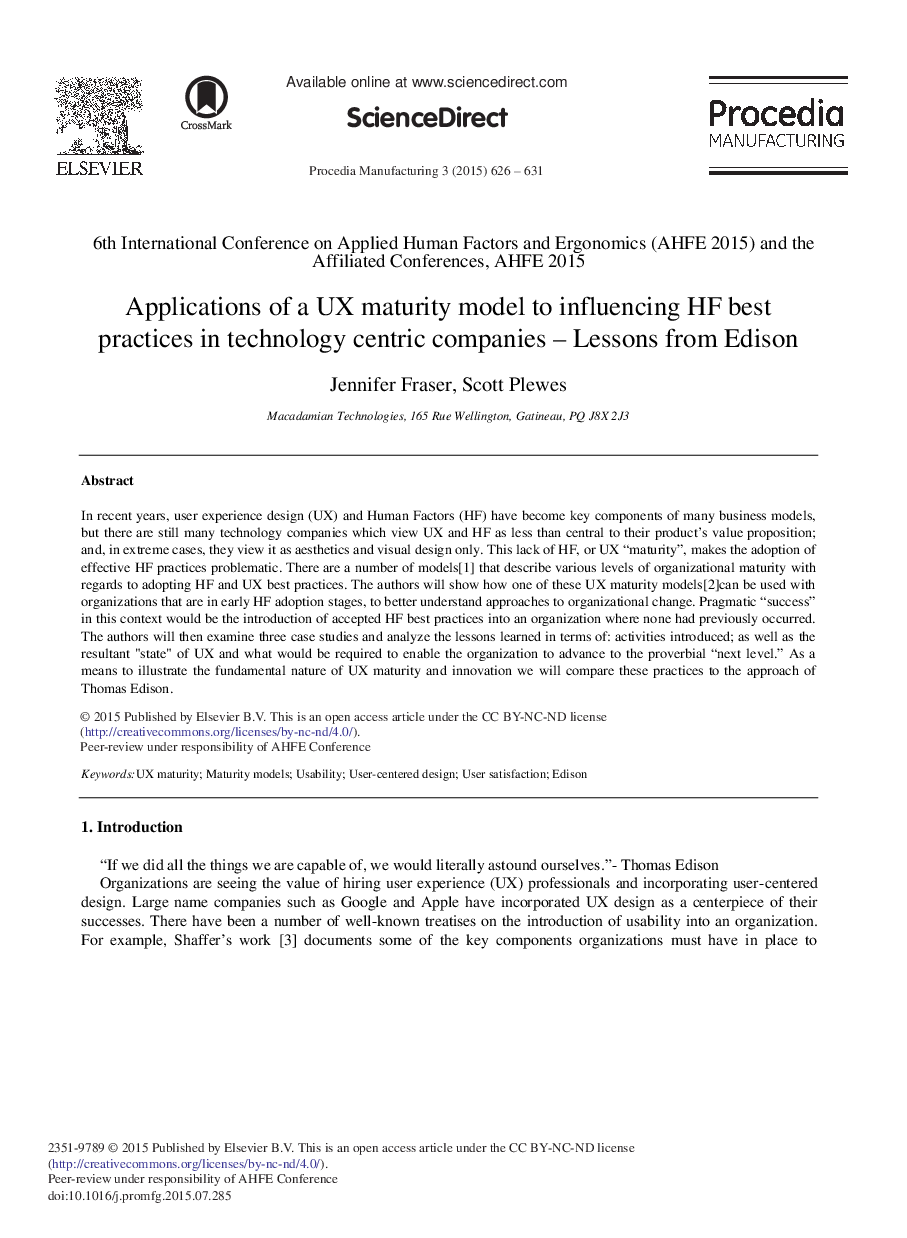| Article ID | Journal | Published Year | Pages | File Type |
|---|---|---|---|---|
| 1143844 | Procedia Manufacturing | 2015 | 6 Pages |
In recent years, user experience design (UX) and Human Factors (HF) have become key components of many business models, but there are still many technology companies which view UX and HF as less than central to their product's value proposition; and, in extreme cases, they view it as aesthetics and visual design only. This lack of HF, or UX “maturity”, makes the adoption of effective HF practices problematic. There are a number of models[1] that describe various levels of organizational maturity with regards to adopting HF and UX best practices. The authors will show how one of these UX maturity models[2] can be used with organizations that are in early HF adoption stages, to better understand approaches to organizational change. Pragmatic “success” in this context would be the introduction of accepted HF best practices into an organization where none had previously occurred. The authors will then examine three case studies and analyze the lessons learned in terms of: activities introduced; as well as the resultant “state” of UX and what would be required to enable the organization to advance to the proverbial “next level.” As a means to illustrate the fundamental nature of UX maturity and innovation we will compare these practices to the approach of Thomas Edison.
